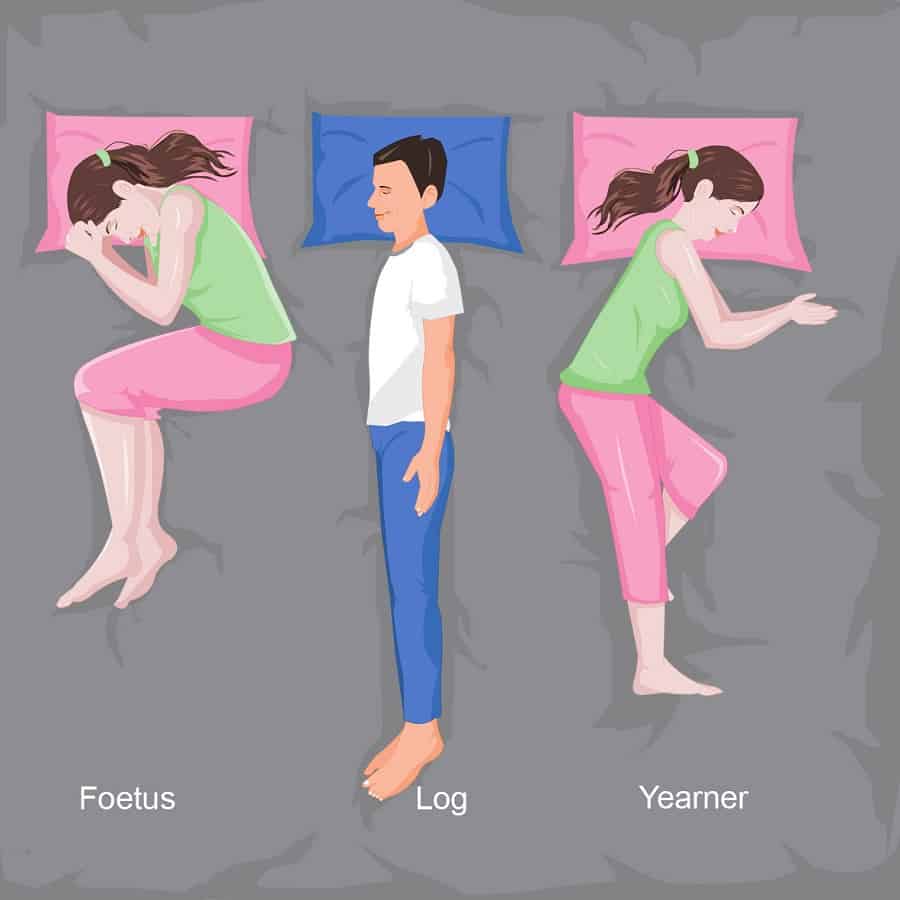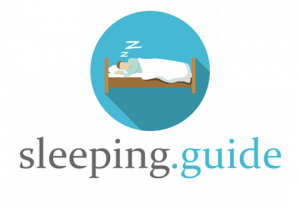Waking yourself up by snoring, feeling pain in odd places, or just not getting a good sleep? It may be your sleeping position. The position we sleep in is naturally different for everyone, but it really does matter.
With some conscious effort, you can change your sleeping pattern to one that is healthier and will give you a better night’s sleep. There are two important parts – first, making sure your sleeping routine is nailed down to prevent any tossing and turning. Then, consciously commit to making that new position work. The right position varies per person and there are some tactics you can use to make it easier. I’ve outlined both and some key sleeping tips in the guide below.
Rundown of best position(s) and why
Before we cover how to get yourself to sleep in a better position, let’s talk about what position might be best for you.
First, the bad. Sleeping on your stomach is a no-go. It places your back and neck in the reverse kind of arch – making it likely you’ll suffer pain in those areas (if you’re thinking “but I don’t right now!” – come back in a few years).
So what are the best positions? Overall, laying on your left side in the fetal position (slightly curled up) is the best for your health. It’s the best for getting an uninterrupted, good night’s sleep. It’s also great for countering snoring if you do it right. Just make sure you’re not lying with your head at an angle where your airway might be blocked when you’re sleeping (read below for more). In terms of health reasons, the left side, in particular, gives your heart the easiest possible job. Lying on your left side means your heart’s pumping blood downwards, which can add up to a big relief over the hours and hours you sleep. For similar gravity-related reasons, sleeping on your left side is better for your spleen, for digestion, and overall blood circulation.
One note is that sleeping on your side does apply some pressure to your spine and joints. If you suffer from joint pain/arthritis, then sleeping on your back is the best way to keep pressure off and prevent waking up with some morning pain. If you do want to sleep on your side, getting a knee-support pillow like this one from Amazon is a great way to get the best of both worlds. The extra support balances out the stress on your spine.
Tactics to Try
Even if you’ve been sleeping in a bad position for decades, it’s not the end of the world to try and change it. With a bit of conscious effort, it’s fairly straightforward to change.
First, it’s important to remember why you’re doing this. It’s easy now, but try saying that when you’re lying in bed and craving your old position. Is it for your health? Your partner (getting rid of snoring)? Make sure to keep that in mind.
Now, the biggest challenge here is that we’re trying to undo a habit which has been done thousands of times. Our auto-pilot brain runs on habits, and it’s completely used to sleeping the way you already do.
So while this may sound silly, I really recommend practicing getting into bed a whole bunch of times. Get into bed, lie in your chosen position, and close your eyes for a few minutes. Then, get back up, wait a minute, and repeat! This will start to give you a headstart on replacing your old sleeping habit with a new one.
I hate when writers do this – but I need to do it to you now: Go on and give this a shot! Trust me, if your first time laying in a position is when you’re tired and sleepy, it’s not going to last long. Give yourself a headstart if this matters to you. Lay down in the position you want to try for a few minutes, then get back up, do something else, and repeat a few times. Build that habit.
If you’re after a more practical solution, there’s a crazy trick to stop yourself from lying on your stomach or back. Which is to sellotape tennis balls onto the back/front of your pajamas (whichever is the biggest culprit). I wouldn’t advise doing this on a night when you really need to get your sleep, but if you can afford a bit of discomfort for a night, then this could be a huge help in teaching your body to stick to your side.
To make this even better, make sure that you’re really ready to sleep when you try these new positions. Get up early, fit some exercise into your day, and don’t eat any huge meals within a few hours of heading to bed. If you’re genuinely tired, it’ll be a lot easier to care less about your sleeping position.
What to do if you’re tossing and turning
Let’s say you read these tips, planned everything out, and lie in bed. What’s the biggest fear? That you end up tossing and turning all night – completely abandoning your important desire to sleep in a better position. The solution here is not to try and force yourself into a position you hate, or to spent all night tossing and turning. Instead, just get up and do something else. If you’re not ready to sleep, we all know that forcing it doesn’t help. Get a glass of water and read a book (don’t go anywhere near an electronic screen!). When you definitely feel tired, head to bed and give that new position another shot.
Best sleeping position to combat snoring
Your sleeping position can play a huge factor in snoring. If you’re a loud midnight growler, then hopefully this can help.
First – let’s define the problem. Snoring is caused by all of our muscles relaxing when we sleep. This includes the tongue. A relaxed tongue, in a lot of positions, partially blocks the airway – leading to the lovely motorbike-sounding noise we all know and love. By knowing this, we can counteract it by sleeping in a better position.
By far the best position is on your side. Now, for some reason a lot of people say to sleep with your head angled upwards, as if you’re trying to peer over a wall. Personally I don’t believe this to be right, and here’s why. Put your head in that position now, push your neck forward and up – and feel how you breathe. It’s much tighter, right? Your tongue is already almost blocking your airway.
Instead, you want to sleep in what’s called a ‘log’ position with your hands down by your sides. (Note: the fetal position is almost as good if you find it better to curl up, but the log is top for helping fight snoring). Again, make sure to tilt your head forwards slightly. Doing this makes gravity your friend. Instead of rolling backwards, your relaxed tongue rests down and forwards – leaving your airway clear. Again, you can easily try this – just tilt your head slightly downwards. See how much easier that is to breathe? Any position which allows you to breathe that well is great for a snorer – gauge what’s comfortable and see how you do.

Positions for certain scenarios (pregnant, surgery, ill)
Finally, it’s worth discussing the best positions for certain situations. Most importantly there’s a lot of concern about what position’s best for sleeping while pregnant! Again, it’s sleeping on your left side which is best for protecting you and your baby. Not only does it give you the health benefits mentioned above (easier circulation, easier on your organs), it also will help relieve any pressure from that enlarged uterus you’ll be experiencing as the baby grows. Again, the knee-support pillow mentioned in the ‘best position’ above could help relieve any extra pressure that’s not being properly distributed into your mattress.
If you’ve just gone through surgery, there is a lot to be said for post-surgery on specific areas. However, in general, it’s important to just sleep whatever is most comfortable for you. While one position may be slightly better than another, what’s most important is only that you’re able to be comfortable and get a good amount of rest. Otherwise, if possible, try to lie on your side (right is fine) or on your back. Don’t stress too much.
Further, if you’re looking to find the best sleeping position for when you’re ill, again it’s pretty much on your side. The fetal position especially, as it really helps with any coughing that you might want to be doing (think of the hunched over position someone with a bad cough adopts – it’s the same, but on your side).
One note if you’re sleeping with someone else next to you: don’t be facing them! If you may be contagious, try not to be in a position where you’re breathing on your partner.
